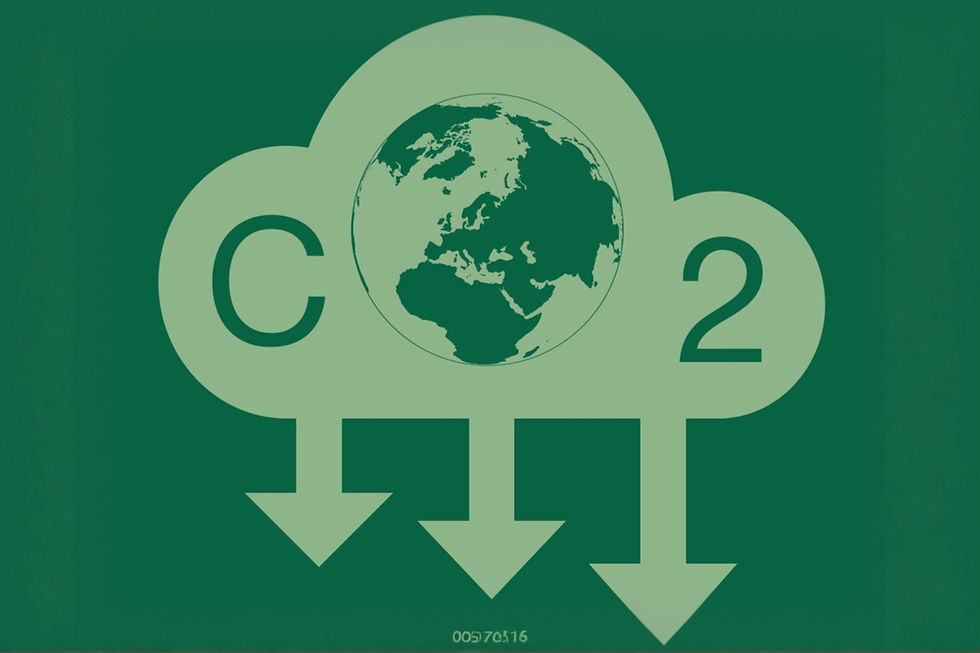Navigating Through Ruin: Evaluating Greece’s Response and Oversight amidst devastation in Thessaly
- Stathis Poulantzas
- Oct 10, 2023
- 4 min read
By Stathis Poulantzas
Positioned in Central Greece, Thessaly, encompassing approximately 14,000 square kilometres, is an agricultural hub, contributing to over a quarter of Greece's grain and a substantial portion of its cotton exports, underscoring its environmental and economic significance to the nation. The recent successive battering by two storms, "Daniel" and "Elias," within a mere month illustrates the alarming acceleration of the global climate crisis, increasingly pressing governments to intensify protective measures against such extreme weather incidents.
The Beginning: Storm Daniel’s Devastation
To begin with, Storm Daniel caused record-breaking rainfall in Greece on 5-6 September, with a reported 750 mm falling in 24 hours at a station in the village of Zagora. This is the equivalent of about 18 months of rainfall. Many stations in Thessaly, central Greece received 400 to 600 mm of rainfall in 24 hours. The natural catastrophe sadly also resulted in a significant loss of human life, with 17 people killed as a direct effect of the storm. It additionally caused major disasters in neighbouring countries, including Turkey and Bulgaria. But, in the most devastated country of all, Libya, over 10,000 people went missing, entire neighbourhoods in Berna and Al-Bayda disappeared, and communications were interrupted, while electricity fell in large parts of the African state. About three weeks later, a second major storm named “Elias” once more hit Thesally on 27 September. The Greek fire service announced that it had no choice but to move over 3,000 people to protected locations as the weather worsened.
Villages experienced flooding, roads were submerged, and schools in many municipalities had to shut down as Greek Prime Minister Kyriakos Mitsotakis activated emergency state services and deployed military units to strengthen protections, notably in the northern Thessaly region. To demonstrate the extent of the severity, the European Severe Weather Database (ESWD) reported that a month’s precipitation had occurred in these 24 hours while the storm persisted for a bit more, bringing additional heavy rainfall, hail, and thunderstorms.
Environmental and Financial Implications of the Storm
Both cases of extreme weather phenomena combined left a significant environmental footprint in the region. More specifically, fruit trees, corn and around a fifth of Greece's cotton crop have been destroyed, and over 200,000 animals and poultry are killed. Additionally, the trees have been infected by bacteria, while most of the water is polluted by numerous chemicals and oil, making the damage further enormous. Most of the crop has been destroyed, and though Greek farmers can replant some crops like cereals and cotton relatively soon, others, such as orchards, cannot easily grow again. In parallel, sheep and goats, which produce most milk for essential Greek products such as Feta cheese and yoghurt, will need more time to be restored. It is worth noting that the environmental devastation has also led to a rapid increase in health problems and sicknesses in Thessaly, for instance, a rise in gastroenteritis and respiratory disease cases.
Further, the financial footprint that the storms left is also noteworthy. To showcase the economic consequences of the floods, in the aftermath of just storm “Daniel”, over 70km of roads, 79 bridges and 130 technical works were damaged, whilst issues in the railroad track
appeared in 16 points, and around 80 schools were flooded. Academics have estimated that just for the short term, the Greek government will require nearly 5 million euros to resolve the issue.
Policy suggestions to be considered by Greece
One can understand the urgent need for actions to restore the region and ensure that such a catastrophe cannot be repeated in Thessaly or any other part of Greece. Prime Minister Kyriakos Mitsotakis recently announced in a cabinet meeting that “adaptation to the climate crisis is a fundamental priority in all our policies.” He has already reached an agreement with the EU to receive vital funding to help the devastated areas and recently thanked the Union for “offering Greece the highest possible flexibility to absorb European funds to address this huge natural disaster.” But this is not enough. Though in a difficult period from an economic perspective, Greece needs to provide more funds to build a fortified resilience on Thessaly, as well as other regions which could be immediately threatened by such natural catastrophes, on a long-term basis.
Some suggestions could involve spending up to 5 billion euros, as suggested, to rebuild any damaged or destroyed infrastructure, ranging from housing to municipality services to roads and health units, and build them with the ability to absorb large amounts of water pressure. Flood control works also need to increase exponentially in mountainous regions, as according to Mr Kimon Xatzibiros, a professor of Environmental Affairs at the University Kapodistrian University of Athens, the country is still 30 years behind in such works. At the same time, the region should be restored as soon as possible, while people should also be incentivised to remain in the area to avoid a large wave of movement towards the big cities, especially Athens (the capital) and Thessaloniki (the second largest Greek city located in the north of the country). That is because, in such a case, many fields will not be restored, and production will suffer from a significant fall, resulting in devastating environmental and financial consequences. Lastly, Greek forces— especially the military— need to be much more prepared with a clear protocol of actions that they should follow, while they should also respond much faster to the following such a dangerous situation.



Comments